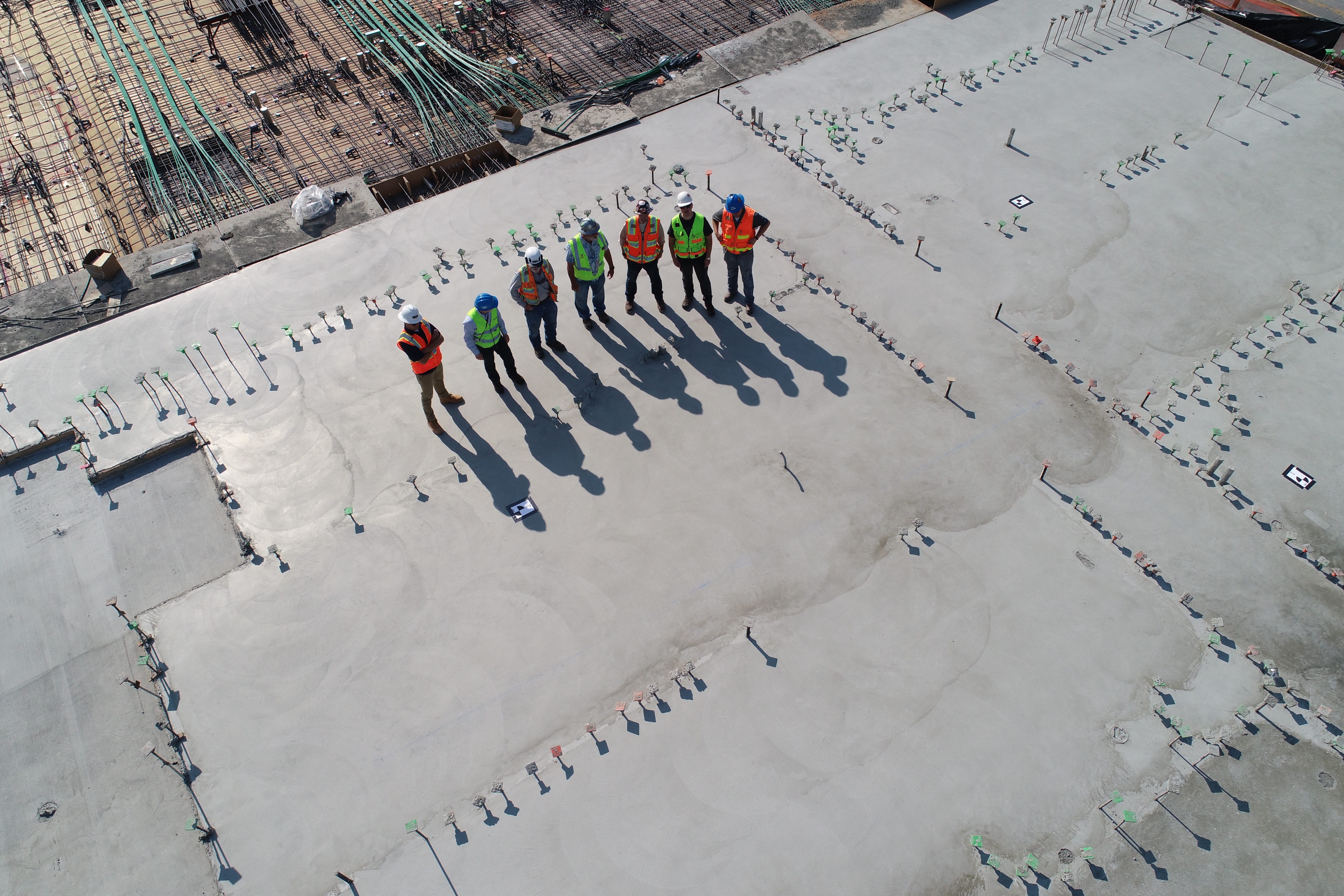Many technological advancements that have led to development of smart wearable devices have already found their application in creating safer working conditions across industries.
Back in 2007, work-related injuries and illnesses cost the United States alone $250 billion and led to the deaths of 59,102 individuals, more than motor vehicle fatalities for the same year.
In addition to having to pay workers’ compensation and settlement claims from lawsuits, businesses are affected by work-related injuries and illnesses in other ways. An injured employee has to miss work, lowering productivity, efficiency, and the morale of the remaining employees.
Also, any company that operates an unsafe workplace will have a hard time hiring new employees and will have to pay the cost of high insurance premiums.
Companies can do a lot of good by creating a safer workspace, and one modern way of achieving that is using wearables. However, different wearables serve different functions, and the right type of wearable depends on the type of injury employees are liable to have.
Different types of injury
When talking about workplace injuries, there are two broad categories to discern:
Injuries resulting from accidents
Accidents happen all the time. Sometimes, they are no one’s fault, and at other times, they can be avoided. Broadly speaking, accidents can be split up into two types:
- Instantaneous: These accidents happen without warning. For instance, an employee working on a construction site slips off a scaffolding and falls. Even though these accidents are unpredictable, their effects can be mitigated. This is why some companies insist that their employees use their personal protective equipment at all times.
- Gradual: These accidents can be predicted and averted should workers and managers be alert for the warning signs. For instance, some workers could inadvertently harm themselves or others due to being drowsy or fatigued. Other workers might get hit by heatstroke.
Occasionally, it is the workspace itself that is hazardous. If left unchecked, employees may get ill from toxic gases or fall from structurally unsound spaces.
The strategy here should be prevention rather than mitigation. This means closely monitoring the employees and the workspace to look out for any warning signs and take preventive measures as soon as possible.
Injuries resulting from workplace violence
According to the Occupational Safety and Health Administration, more than 2 million Americans are afflicted by workplace violence annually. 2017 saw 18,000 individuals suffer non-fatal injuries due to workplace violence, whereas 800 lost their lives. This dynamic has led to around 14 percent of Americans feeling unsafe at work.
Companies should institute rigorous violence prevention programs while giving employees ways of reporting incidents without fear of backlash. Better yet, companies should strive to provide their employees with ways of reporting the violence as it is happening.
How wearables can increase workplace safety
Having seen the different ways employees can get injured, we can now understand how wearables can help. There are four main functions wearables can perform: monitoring, supporting, information feeding, and communication.
Monitoring
Close monitoring can be crucial to combat both Instantaneous and gradual work-related accidents.
Companies can attenuate the effects of instantaneous accidents by keeping a close eye on their employees. For example, using location tracking technology embedded in clips, equipment tags, and worksite sensors, a construction company can know where all employees are during the workday, enabling the company to respond 40 percent faster to worker falls and injuries.
Some wearable devices can monitor an individual’s vital signs like heart rate, temperature, and blood pressure. This can be valuable information to first responders whenever there is an accident in the workplace; paramedics can know what they’re dealing with before they even arrive at the scene.
The best way to reduce gradual accidents is to keep an eye out for the tell-tale signs of impending disasters. Monitoring an employee’s vital signs can prove critical in stopping an accident before it happens.
Smart glasses that can detect whether the wearer is fatigued can help employers stop tired employees from endangering other people’s lives. Similarly, bracelets that monitor an individual’s temperature or heart rate can alert them if they are getting overexerted or exposed to too much heat stress.
Wearables are also useful in preventing injuries due to negligence or lack of awareness. For instance, many injuries that happen in the construction industry are a result of poor technique, which is why lower back pain is one of the most common reported injuries in that sector.
Using sensors and other types of wearables, managers can monitor their employees’ technique while on the job, and spot if any employee is using bad form that can prove injurious to them.
Moreover, wearables can be used to change unwanted behavior. A perfect case in point is how Parsons Corp., a company operating in the defense, security, and infrastructure sectors, used radio-frequency identification tags or RFID to better understand how its employees interacted with machines and how often employees were within close proximity to a certain piece of equipment.
Once the company had the full picture, it was able to drill down and talk to individual employees in the hopes of understanding why they were that close to a dangerous machine. Eventually, the company understood its employees behavior and was able to change it, lowering the chances of an accident happening on-site.
Supporting
Some wearables perform a supporting function where they lower the possibility of both instantaneous and gradual accidents. Here are a few examples:
Exoskeletons: Almost one out of every five work-related injuries is a back injury, especially among workers who have to do a lot of heavy lifting. Exoskeletons can help with the heavy-lifting, shouldering a portion of the weight and reducing the required muscle force by up to 60 percent. Exoskeletons come in all shapes and sizes, from the simple Chairless Chair to a more advanced full-body armor.
Virtual reality headsets: Adequate training prepares employees for what is to come, teaches them how to follow safety precautions, and lets them know what to do in case of an emergency. This training can be expedited and carried out in a safe environment with the help of virtual reality headsets. Better yet, VR headsets can save companies the cost of having to bring in an in-person trainer.
Remote wearables: Many technologies that we take for granted today can be made safer with the use of wearables. For example, warehouse workers use handheld scanners all the time. However, if these scanners were embedded in a wearable glove, one where the user only has to press a button on the glove to scan an item, this would shorten the process and make life easier for the workers. It would also offer employees a safe option as both their hands would be free and they wouldn’t be encumbered by a handheld device should they need to react to an emergency.
Information feeding
When employees are working on-site, they need plenty of information to help them do their job. Wearables can provide them with that information, but wearables can also provide employees with life-saving information.
For example, if there is a gas leak, sensors attached to a worker’s helmet could alert them of the need to evacuate the space. Similarly, with the help of geofencing, employees can know which sites are safe and which are dangerous. This information can be fed to them through their smart glasses.
Communicating
We have seen how wearables can help tackle both instantaneous and gradual accidents, but wearables can also help with injuries related to workplace violence.

For instance, employees can be given a panic button which they can push whenever they feel they are in danger or are about to get harmed. This button would alert the responsible individuals and also notify them of the employee’s exact location, making it possible to get to them in time.
How to make the most from wearables
Many technological advancements that have led to development of smart wearable devices have already found their application in creating safer working conditions across industries.
Artificial intelligence, 5G networks, and cloud servers, all working in conjunction, are ensuring that wearable devices are always connected, sending and receiving important data.
All of this is leading towards creating a more secure and transparent environment that is not only affecting worker safety, but benefiting a company’s bottom line as well.


Join the conversation!